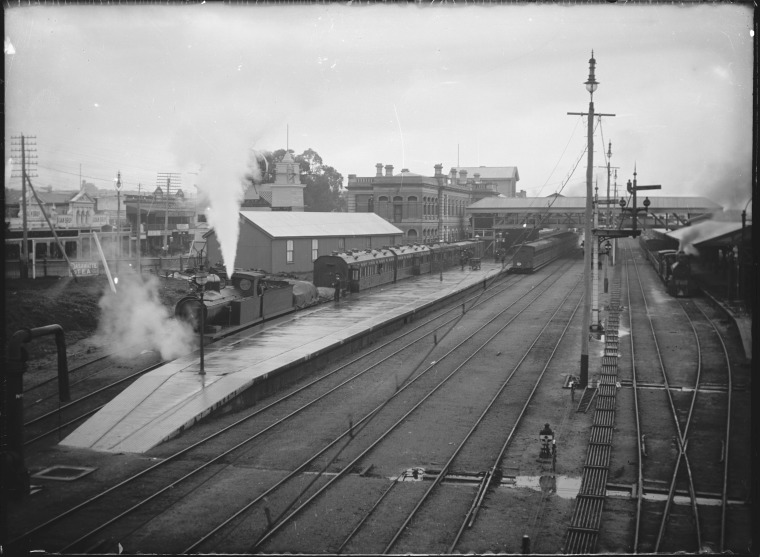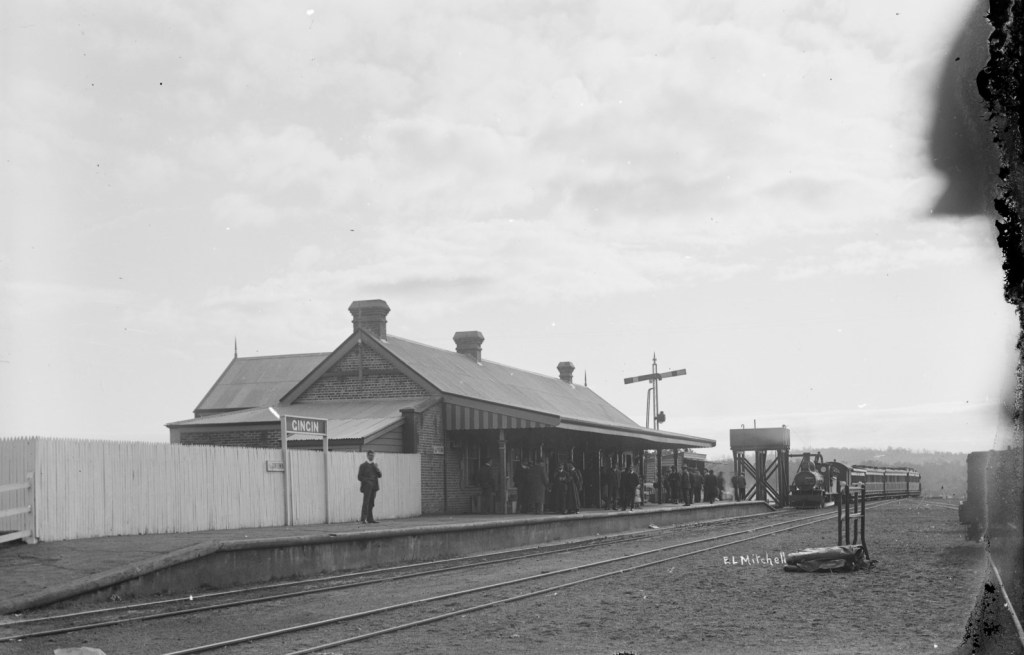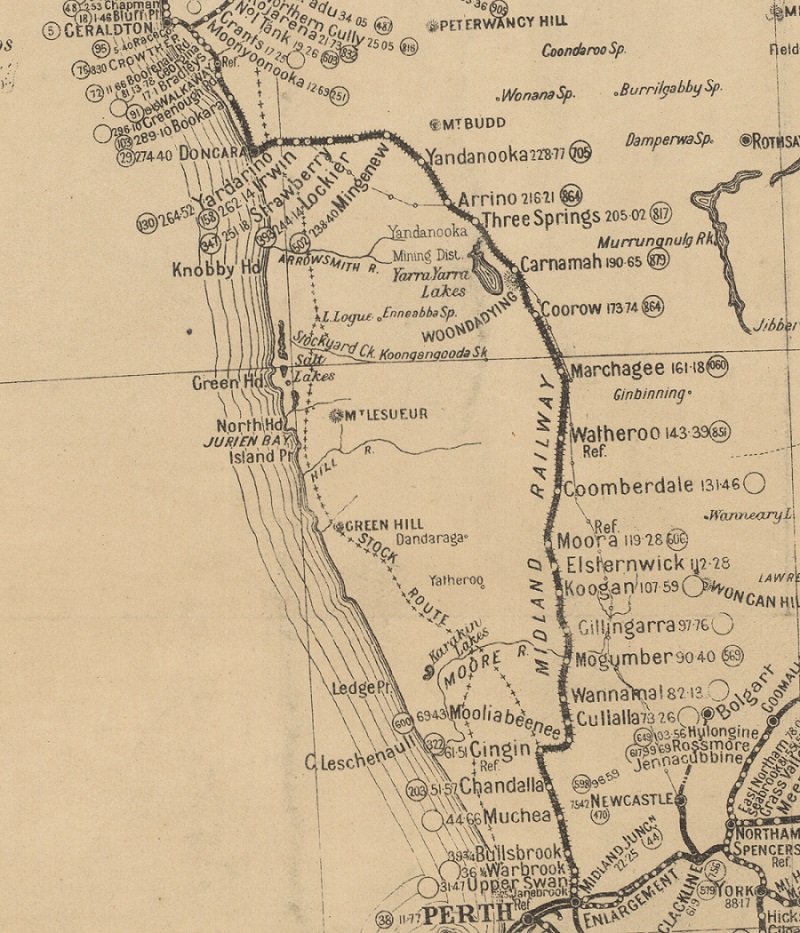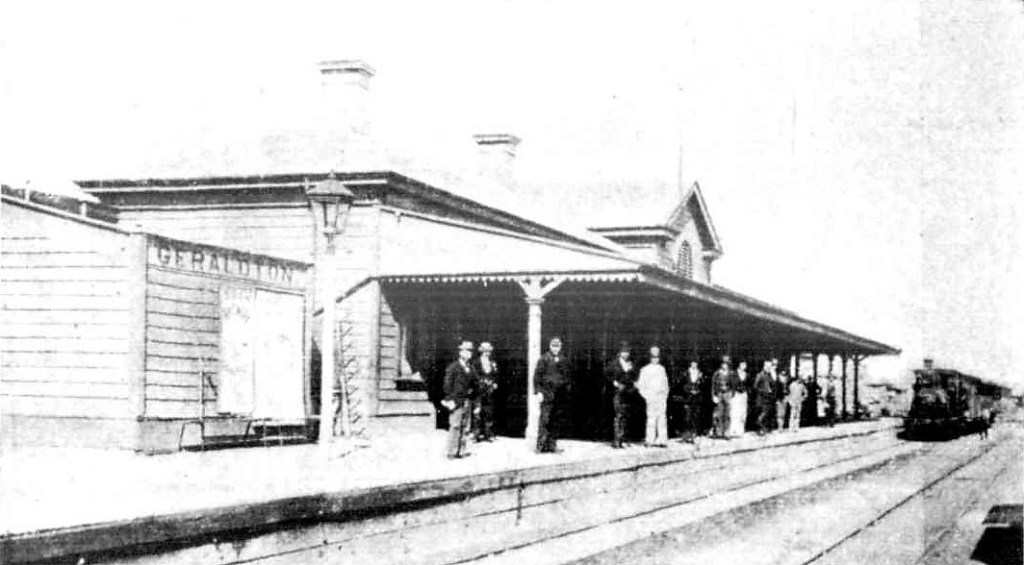At 7:45 am, in Perth, Edith Bickerton boarded the train bound for Geraldton. A postal worker, and occasional writer for the Western Mail, she decided to record her story for the newspaper. Printed in February 1905, she called it: “Along the Midland Railway. Perth to Geraldton. A Lady’s Journey.”

From Perth, the train travelled over the Government owned railway until it arrived at Midland Junction at 8:17 am. Greeting the passengers was the sound of workers at the Midland Railway Workshops. The clang of metal and the hiss of steam filled the air. At Midland, an old man walked through the train, placing water and towels in each lavatory. As preparation for the night ahead, workers hung lamps from holes in the roof.
The next part of the journey was on the railway line owned by the Midland Railway Company of WA Ltd. As they moved north, visible in the distance were the hills, cloaked in the morning’s mist. Looking out the window, Edith saw windmills, brickyards, vineyards, and orchards. Throughout that part of the line, there was not a lot to indicate where they were. The train stopped, a railway employee threw out papers, bags, and bundles, and a passenger or two disembarked. She stated, “A man calls out an unpronounceable sound, supposed to be the name of the district or stopping place, and after a short delay, the train again starts.”
At one place a selector with his dog drives up with a fine strong horse and brand new cart to meet the wife and baby daughter. Baby has such a crop of bright golden curls, and is all in blue.
The first station with a platform after Midland was Muchea. At the stop was another train. Men standing near an iron tank filled their waterbags using a jug. They obliged Edith and her companion and filled their kettle. Using a spirit lamp, they boiled the water so they could have a cup of tea.
At 11 am, the train arrived in Gingin. Described as a “flourishing agricultural district,” Edith observed goods sheds and admired the two-year-old Gingin Hotel across from the train station. In the distance, trees lined the Gingin Brook. The surrounding area showed signs of farming; paddocks, fallow fields, and haystacks. The train waited at Gingin for 15 minutes, and, as it was a refreshment station, passengers could purchase tea, scones and cream, and fruit.

Mooliabeenee was the next stop. While they waited, a woman hurried out from a hut and pulled a handle, setting the signal for the train. Onwards from Mooliabeenee was a sight for nature lovers. The sun was shining in a clear blue sky. Flowers of red, pink, and yellow covered various bushes. Indicating that Edith travelled around December 1904, she described seeing masses of yellow mistletoe.
Dear Australian gums, how the exile bushman from these shores must long for a sight of you once more, in all your monotonous grandeur, to smell again the fragrant perfume from your leaves, wafted on the morning air.
The train passed Cullalla, Wannamal, Mogumber, Gillingarra, Koogan, Elsternwick, Moora and Coomberdale. It arrived at Watheroo (another refreshment station) at 2 pm. At the train station, passengers had the opportunity to buy a substantial dinner. Soft drinks cost sixpence, and alcohol was available for those who wanted “something more stimulating.”

Edith described the countryside north of Watheroo as consisting of “billowy downs.” Eventually, they passed what they initially thought was a river. Looking closer, they realised they were crossing a salt lake. Some sections were softer than others, and they could see the tracks of carts and animals. While the name was unknown to her, the salt lake she saw was the Yarra Yarra Lakes, between Carnamah and Three Springs.
Later, they passed a well showing signs of the ground trampled bare around it. Cattle and horses gathered waiting for two men to water them. The men turned a windlass, drawing water from the well in a bucket. By that point, daylight was fading fast.
The sun sinks low in the sky, sending long shadows slanting from the scant trees.
At Arrino, a man walked along the carriages lighting the lamps with a torch dipped in oil. Yandanooka was the next stop, and they picked up cattle and horses crammed in bogie trucks.

Darkness fell, and a strong westerly breeze started blowing. At 8 pm, the train stopped for 20 minutes, but Edith did not catch the name of the station. Consulting a railway map shows the town was Mingenew. It was heavily populated, and men greeted the passengers, eager to collect newspapers they did not want. Others were willing to lend a hand and filled Edith’s kettle with water.
News of the war (the Boer War) was especially of interest. Edith remarked that they left Perth with lots of magazines and newspapers, and gave most of them to gangers and settlers along the way. At one station, she watched as six men gathered around to read a single copy of The West Australian.
Continuing on, men removed large trunks and boxes at Dongara. Passing a camp at another stop (either Bookara or Greenough Road), they watched as two men waltzed to the tunes of a mouth organ. At midnight, the train arrived at Walkaway. Edith reached the end of the Midland Railway Company’s line, but not the end of her travels. A man collected the towels, and Edith handed over her pass. In return, she received a first class ticket for the Government line to Geraldton.
After a journey of 287 miles, Edith finally arrived at Geraldton at 1 am as “the moon is sinking over the waters of Champion Bay.” She spent about 17 hours on the train and was feeling tired, dusty, and stiff. A hotel porter met her at the railway station and collected her baggage in a wheelbarrow. Together, they walked down the street to the hotel, and no doubt, to an eagerly awaited rest.

Source:
- 1905 ‘ALONG THE MIDLAND RAILWAY.’, Western Mail (Perth, WA : 1885 – 1954), 18 February, p. 39. , viewed 12 Mar 2021, http://nla.gov.au/nla.news-article37383977
- State Library of Western Australia; Into the Perth Railway Station from the east [picture]; 1905; Passey collection of photographs ; 5323B/1024; Call Number: 008105PD.
- State Library of Western Australia; Watheroo Railway Station [picture]; 1905; Passey collection of photographs ; 5323B/1059; Call Number: 006440PD.
- State Library of Western Australia; Gingin Railway Station [picture]; 1910; People and places in Western Australia; BA596/79; Call Number: 031240PD.
- 1904 ‘GERALDTON RAILWAY STATION.’, The Australasian (Melbourne, Vic. : 1864 – 1946), 27 February, p. 30. , viewed 17 Mar 2021, http://nla.gov.au/nla.news-article138763995
- Western Australian Government Railways Commission. 1907, Railway map of Western Australia, 1907 H.J. Pether, Govt. Lithographer, [Perth, W.A viewed 17 March 2021 http://nla.gov.au/nla.obj-233502104

CONGRATULATIONS! Your blog has been included in INTERESTING BLOGS in FRIDAY FOSSICKING at
https://thatmomentintime-crissouli.blogspot.com/2021/03/friday-fossicking-26th-mar-2021.html
Thank you, Chris
LikeLiked by 1 person